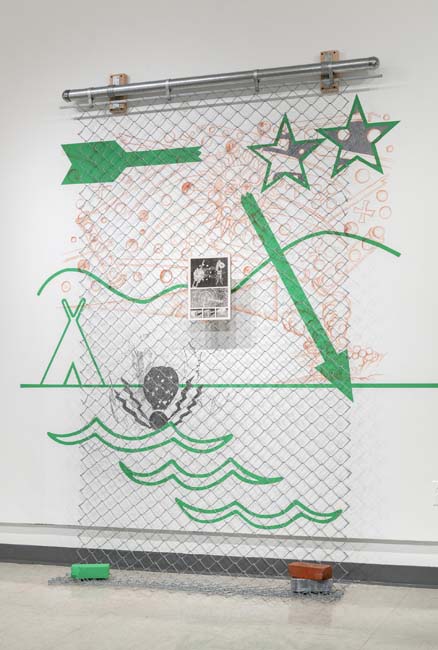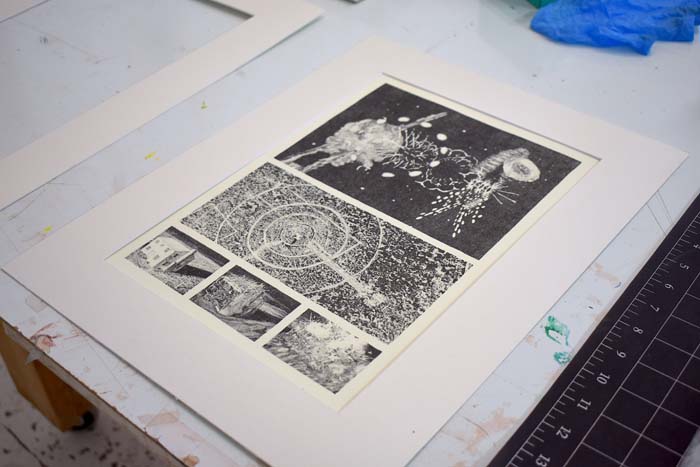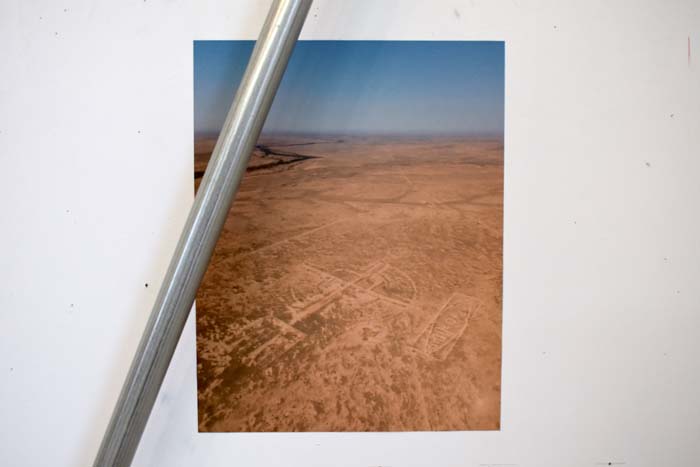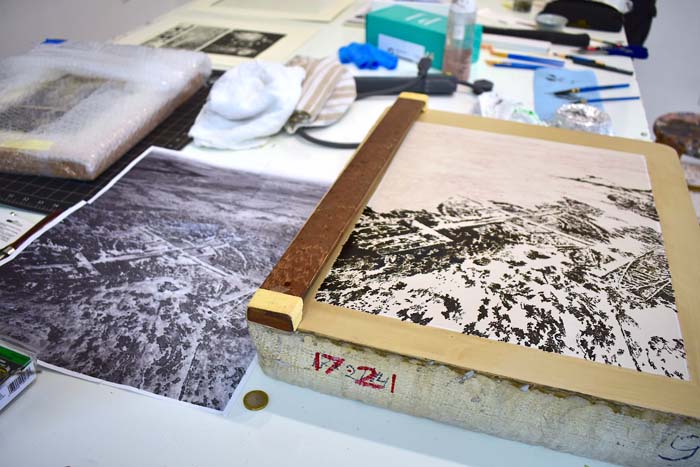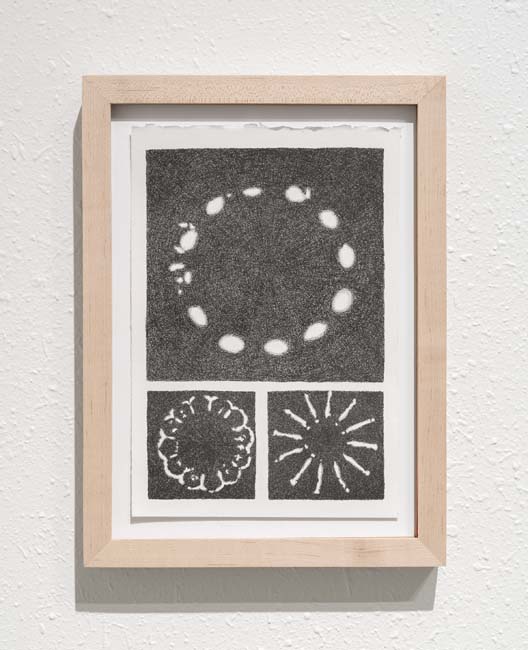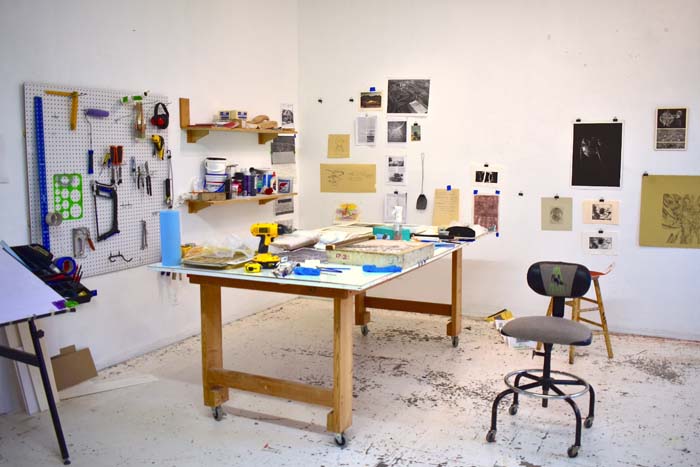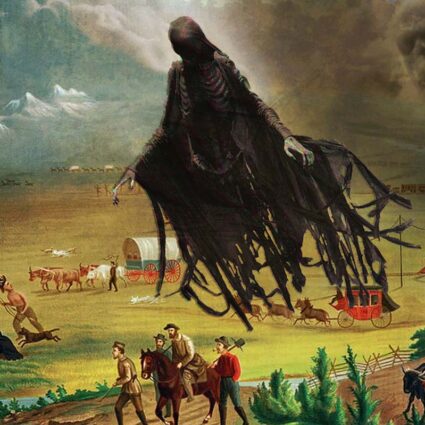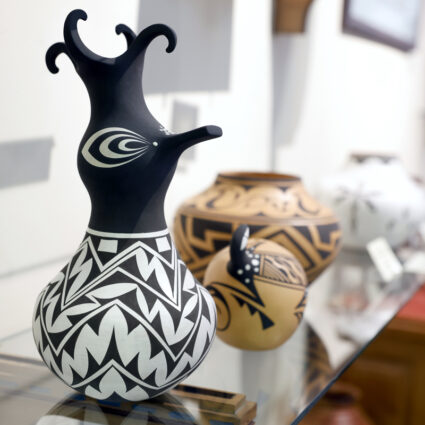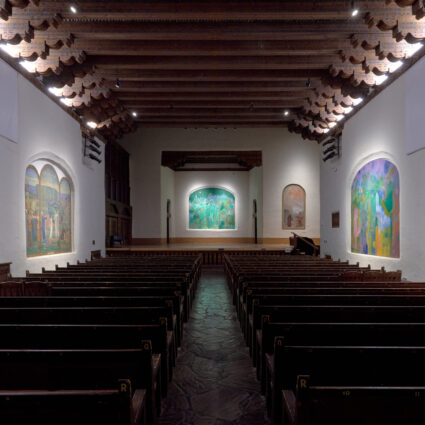Roswell artist-in-residence Alex Boeschenstein takes inspiration from things seen in the skies in Visionary Rumor at the Roswell Museum.
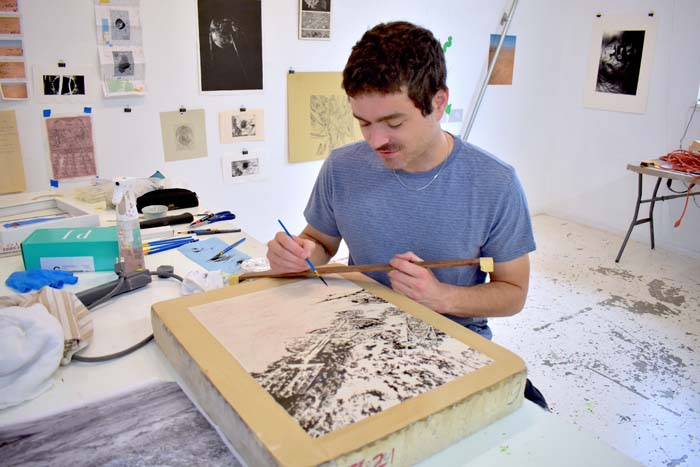
Roswell artist-in-residence Alex Boeschenstein recounts glimpsing a threatening cloud beginning to form overhead during his first night at the RAiR residency. Like a vision, this strange cloud condensed into something that looked like “a sinister spacecraft” to the artist. This unsettling atmospheric experience profoundly influenced his new artworks, a grouping of multimedia installations and stone lithography inspired by the storied histories of Roswell, New Mexico, the most famous of which is the city’s association with the legendary 1947 crash of an alleged Unidentified Flying Object.
Boeschenstein’s exhibition Visionary Rumor, on view at the Roswell Museum until October 29, 2023, displays his practice of “artistic prospecting.” This method pays critical attention to local histories and experiences of place by implementing extensive archival research, on-site fieldwork, and studio experimentation.
Despite the thousands of visitors who come for the annual UFO Festival, Roswell is much more than the site of a possible interstellar encounter. The complexity of the city’s history is something that Boeschenstein’s Visionary Rumor explores with sensitivity and speculative playfulness.
The title of the exhibition is taken from a concept introduced by famed psychoanalyst Carl G. Jung in a collection of essays published in 1958 under the title Flying Saucers: A Modern Myth of Things Seen in the Skies. Jung sought a psychological cause for the frequent UFO sightings recorded around the world after the “Roswell Incident.” He was specifically interested in the American Southwest region’s high concentration of unexplained green lights and fireballs in the sky. In a 1951 letter, Jung said, “I haven’t been able to make out with sufficient certainty whether the whole thing is a… mass hallucination, or a downright fact. Either case would be highly interesting.” Jung interpreted these collective experiences as a “visionary rumor.” It is a shared visual response to an omnipresent sense of distress and danger much like the panic and fear experienced by listeners of Orson Welles’s 1938 radio retelling of H.G. Well’s book The War of the Worlds.
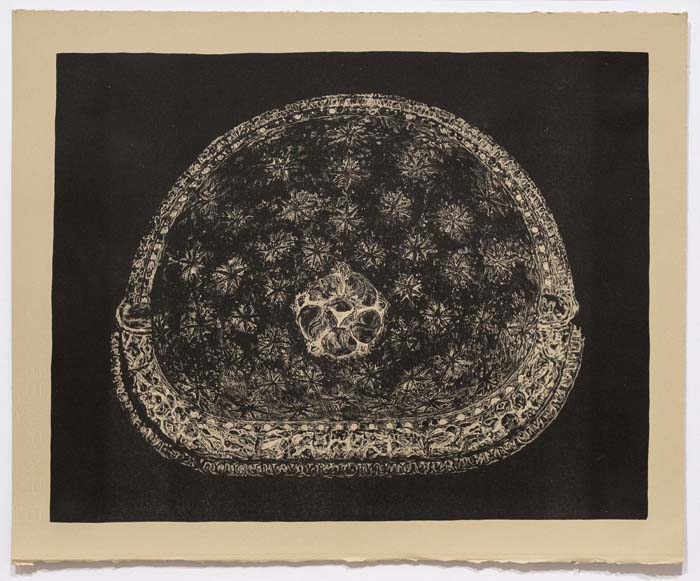
Boeschenstein’s installations and lithographs in Visionary Rumor allow viewers to experience a similar type of “visionary rumor.” In Perpetual Broken Arrow (2023), a large multimedia installation, a chain link fence covers green and orange images screen-printed directly on the gallery wall. Behind the fencing are green outlines of a landscape with a camping tent, a large insect splashing into waves, and a curious broken arrow floating above everything. One of the artist’s stone lithographs hangs on the exterior of the chain link fencing.
This black-and-white untitled print features three distinct images contained in horizontal registers. The top image displays abstract orbs and circles radiating outward in different patterns and combinations. The middle image continues these circular forms but in a more restrained manner. At the bottom, there is a depiction of a house in various states of physical deterioration from fully intact to seemingly blown to pieces.
The lithograph appearing in Perpetual Broken Arrow references three important components within the history of Roswell: the sighting of UFOs, monumental geoglyphs present in the neighboring desert, and nuclear tests and atomic weaponry. The top register recalls the artist’s first day at RAiR peering at the strange formation in the sky not unlike those who experienced the “Roswell Incident” nearly eighty years ago. The middle register is a lithographic copy of aerial photographs taken of military geoglyphs, about forty-five minutes south of Roswell, constructed as bullseyes for missile training. The house in the bottom register comes from the well-known film of the Operation Teapot Apple-2 nuclear test on a fabricated American city at the Nevada Test Site in 1955. The B-29 plane, named “Enola Gay,” that dropped the devastating atomic bombs on Hiroshima and Nagasaki, Japan returned to the United States through Roswell Army Air Field before flying out for a nuclear test in the Pacific. These three images contextualize that strange things seen in the sky were common during the Cold War—and not just in New Mexico. The lithograph suggests that there is great ambiguity in knowing whether you are seeing a UFO, military aircraft, a crop circle, or a weapon detonation. His artworks communicate the limits of rational understanding, the tricks our minds can play on us, and the communal desire to understand misleading and evasive societal and environmental processes out of our control.
Boeschenstein uses lithography for the first time in his installation work at RAiR, a choice of medium with immense meaning to the themes of the exhibition. Jung’s book Flying Saucers discusses the history of print media as the ideal means for circulating accounts of unexplained phenomena. For example, the celestial phenomenon of 1561 in Nuremberg, Germany, was documented through a woodblock print made for mass publication as a broadsheet. It shows the German cityscape overcome with colorful orbs, cylindrical objects, and other odd items seemingly engaged in battle. Looking closely at Boeschenstein’s Perpetual Broken Arrow, one can see an orange screen-printed copy of the Nuremberg broadsheet.
The artist’s extensive use of stone lithography serves as a commentary on printmaking and news reporting as essential in the creation of “visionary rumors.” For Roswell, the media coverage of the purported UFO and the sustained interest in the event create a living myth. The local histories cited by the artist reveal the power of illusions or visions to cope with emotions of uncertainty and powerlessness. Specifically, the enigmatic forces underlying the “Roswell Incident” correlate with larger societal anxieties about global political and economic instability, the continued fallout of the atomic age, and the misleading nature of politics today.
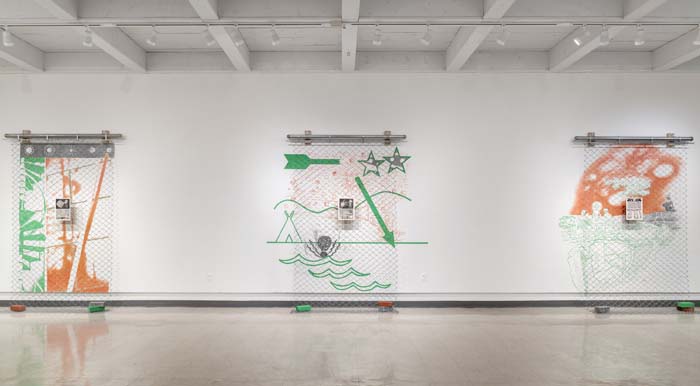
Boeschenstein’s Visionary Rumor creates a tactful yet playful space for the speculative in a world where the fringe and the mainstream are increasingly at odds while at the same time becoming inexplicably meshed. He highlights Roswell’s history as a case study for thinking about the cathartic effect of giving shape to these uncertain “visionary rumors” while also seeking concrete ways of looking critically at powerful governmental and defense institutions.
One cannot help but think, after viewing the RAiR artist’s new works at the Roswell Museum, that the menacing cloud he saw his first night at the residency was maybe, just maybe, not what it fully seemed.
